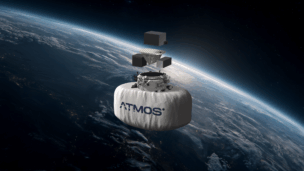Orbit Fab UK, the company building satellite refueling stations in orbit, made two announcements today that may open the door for xenon gas refueling.
- Orbit Fab landed a €750,000 ($870,000) ESA contract—as part of the agency’s Advanced Research in Telecommunications Systems (ARTES) program—to work with telecom operators in GEO to integrate xenon refueling technology.
- The company also unveiled its next demo mission, which will build flight heritage for the new high-pressure variant of Orbit Fab UK’s RAFTI refueling hardware supporting xenon fuel.
“We’ve got missions planned for depots, and customers, and shuttles in space for hydrazine. We can add to that depot a xenon tank, then a xenon shuttle, so we can serve whole new customers,” Jake Geer, managing director of Orbit Fab UK, told Payload. “That’s where we need to be to fuel that thriving in-orbit economy that we all want to see.”
Tele-can do: Orbit Fab’s ESA contract, the company’s first as a prime, tasks it with helping telecom operators retrofit their sats with RAFTI refueling ports. Geer expects these satellites will launch before the end of the decade, after which refueling could come whenever the satellite operators need more juice.
Orbit Fab could refuel sats soon after the machines make their orbit raise to GEO, or at any point in their missions to add more maneuvering budget, increase time on orbit, or provide the final kick necessary to head for a graveyard orbit.
Demo day: In the meantime, Orbit Fab UK is flying a demo mission with its upgraded RAFTI valve. The goal is to make sure that RAFTI’s internal upgrades, including new materials and valve structures, can handle pressurized xenon gas without leaking in microgravity.
The mission, named “Shilling” after a female WW2 engineer who fixed the Spitfire’s fuel system, is scheduled to launch from India in early 2026. Orbit Fab will fly aboard an Exotopic satellite bus, on its “Give Me Some Space!” mission, which will also host payloads from a range of UK startups.
The Exotopic mission has “lots of propulsion people and new types of prop systems,” Geer said. “They’re natural people to work closely with, so there’s partnerships we can form just by being on that mission.”



